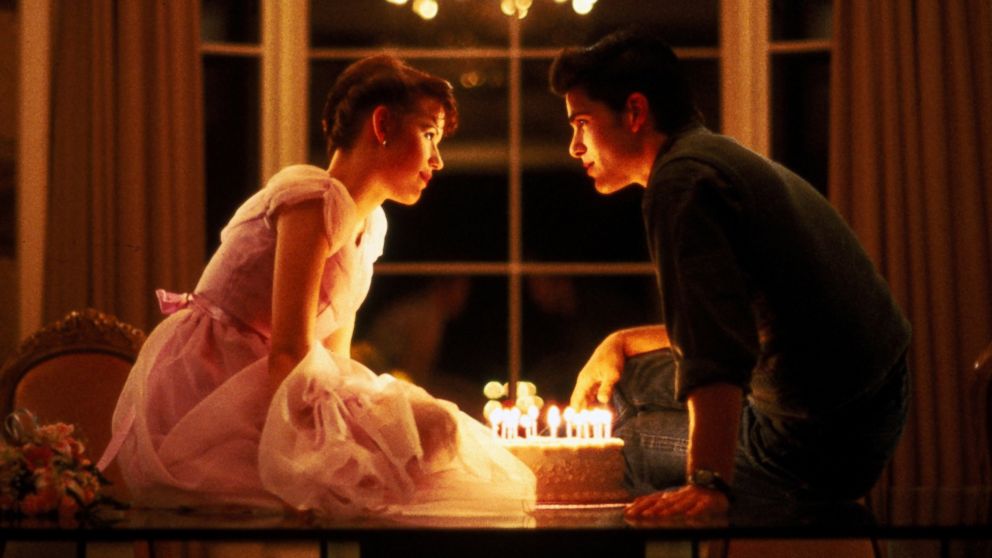What the Movies 'Sixteen Candles,' 'Clueless' and 'Mean Girls' Have in Common
How these films contributed to the rise of the teenage girl.

— -- Three movies spanning three decades — “Sixteen Candles,” “Clueless” and “Mean Girls” — are often pitted against one another when people look back at movies that defined a new generation of teenagers.
Which film was the most quotable? Which had the most lovable heroine or the dreamiest high school jock? These films are bonded not only by their similarities and their popularity but also by the rise of the teen girl.
Before movies like the 1984 classic “Sixteen Candles,” Hollywood had a somewhat complicated relationship with the teenage audience.
“Teen movies and their sexuality were all about boys,” Martha Coolidge, the director of the 1983 movie “Valley Girls,” told ABC News. “And what happened in the ’80s is you did have girls emerge equally as funny, talented people and chosen as subject matter.”
It marked the beginning of girl power at the box office, and actress Molly Ringwald rose to fame through her portrayal of the quintessential teen icon in “Sixteen Candles,” “The Breakfast Club” and “Pretty in Pink.”
“Molly Ringwald was amazing, and she had such a run, too, of films that made you feel less alone in your feelings,” Reese Witherspoon told ABC News at the 2015 Oscars luncheon.
In the 1980s, teen movies made a breakthrough, becoming more of recognized genre.
Hughes, who wrote several ’80s classics — including “Ferris Bueller’s Day Off,” “Sixteen Candles” and “The Breakfast Club” — took this idea to the next level by focusing on teenage life and casting age-appropriate actors.
“I feel like [Hughes] took what we’d seen in other films and labeled as ‘neurotic’ or ‘confused’ or ‘troubled’ and called it ‘a teenager,’” actress Laura Dern told ABC News at the Oscars luncheon. “And it gave everyone room to just remember what it feels like to actually be going through puberty and trying to find your way toward being an adult.”
“I think John Hughes was incredible at understanding the adolescent brain and those formative experiences,” Witherspoon said.
The 1995 surprise hit “Clueless,” loosely based on Jane Austen’s 1815 novel, “Emma,” followed a similar coming-of-age formula from the ’80s films, again told through the teen girl perspective.
Alicia Silverstone stole America’s hearts as Beverly Hills rich girl Cher with her sass and style. Come on — who didn’t want her closet?
Cher was the stereotypical high school popular girl who made it her mission to take the new girl, Tai, played by Brittany Murphy, under her wing. The movie influenced teen culture, style and even the vernacular — “As if!”
The teen themes and social divides prominent in “Sixteen Candles” and “Clueless” were also the backbone of the 2004 movie “Mean Girls” — a film written for a new generation by sharp-witted Tina Fey.
“Mean Girls” deconstructed high school social dynamics through satire, as told from the point of view of fresh-faced Cady Heron, played by Lindsay Lohan. But this celebrated film wouldn’t continue to have relevance if Fey hadn’t taken the high school genre and elevated it so provocatively and directly from the perspective of the typical high school girl, even if the characters may be slightly exaggerated.
Each of these films marked the rise of the teen girl through the decades and left its mark on the culture. Each left a lasting impact on its fans and spawned a devoted following. The films’ impact was felt at the box office as well. Hollywood attracted throngs of young women with these movies that told more realistic stories and had relatable characters.
This shaped a powerful and dynamic demographic of teen girl moviegoers that remains a major force at the box office.




